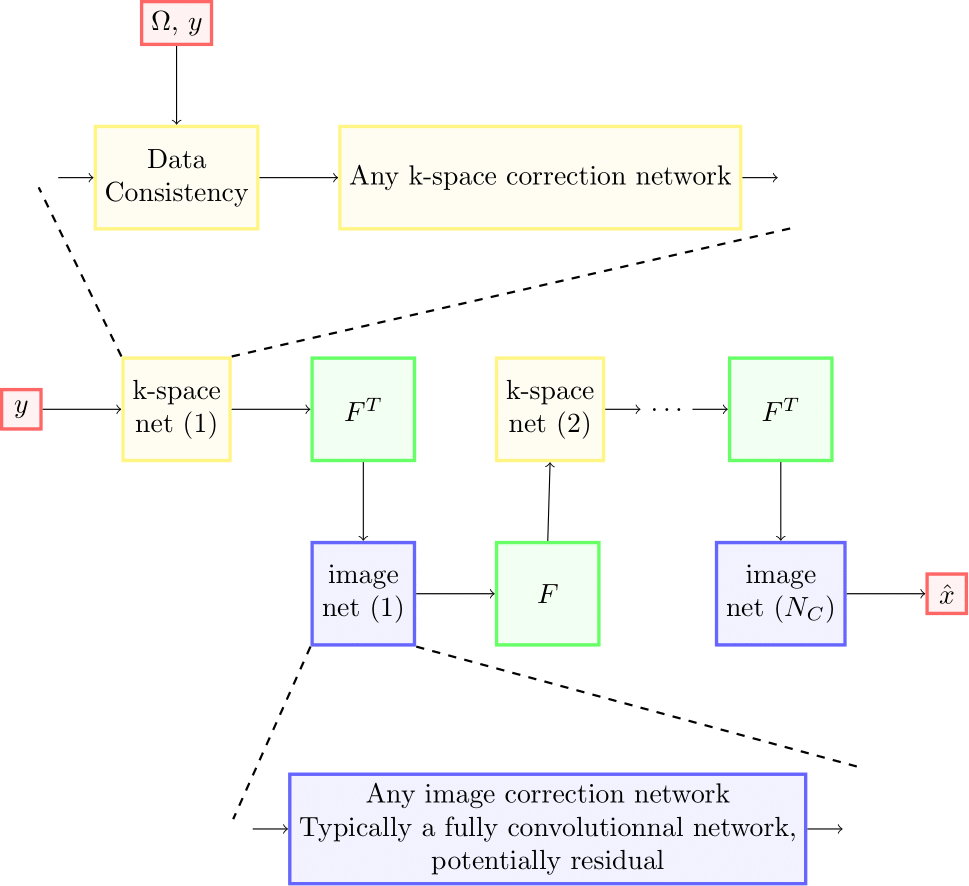Classical methods used in Magnetic Resonance (MR) image reconstruction have allowed to reduce the acquisition time for MRI by being able to retrieve an image from only a subset of measurements (done in the Fourier space of the image, also known as the k-space).
However, these methods are still limited by some factors:
- speed: the classical methods typically require hundreds of iterations each using potentially costly operators. This is even more true when talking about high resolution 3D images.
- data-specificity: the classical methods rely on using image priors that are not nearly specific enough to tackle the complexity of MR images, like the wavelet transform decomposition.
With Deep Learning (DL), we hope to surpass these 2 drawbacks to allow for even greater acceleration of the MRI exam.
To that effect, we have built a huge benchmark that allows to rapidly implement/evaluate new architectures on the recently released fastMRI dataset. This benchmark allows to implement:
- classical de-aliasing architectures, like the U-net
- unrolled architectures
- 2D, 2D-multicoil, 3D reconstructions, in either cartesian settings, or non-cartesian (with the help of an in-house developed and maintained package) reconstruction

Typical architecture of the unrolled networks for MRI reconstruction.
Here y are the measurements in the Fourier domain of the image (k-space), Omega are the measurements positions, F is the Fourier transform, and x is the reconstructed image.
The best network so far in this benchmark allows us to reach the 1st place in NMSE and PSNR for 4-fold acceleration (2nd for 8-fold) on the fastmri leaderboards for knee data (5-th in SSIM).
Code
Python codes are available here, along with Jean Zay submission scripts.
References
Zaccharie Ramzi, Philippe Ciuciu, Jean-Luc Starck
Benchmarking deep nets MRI reconstruction models on the fastMRI publicly available dataset,
ISBI, 2020
Zaccharie Ramzi, Philippe Ciuciu, Jean-Luc Starck
Benchmarking MRI Reconstruction Neural Networks on Large Public Datasets,
Applied Sciences, 2020

